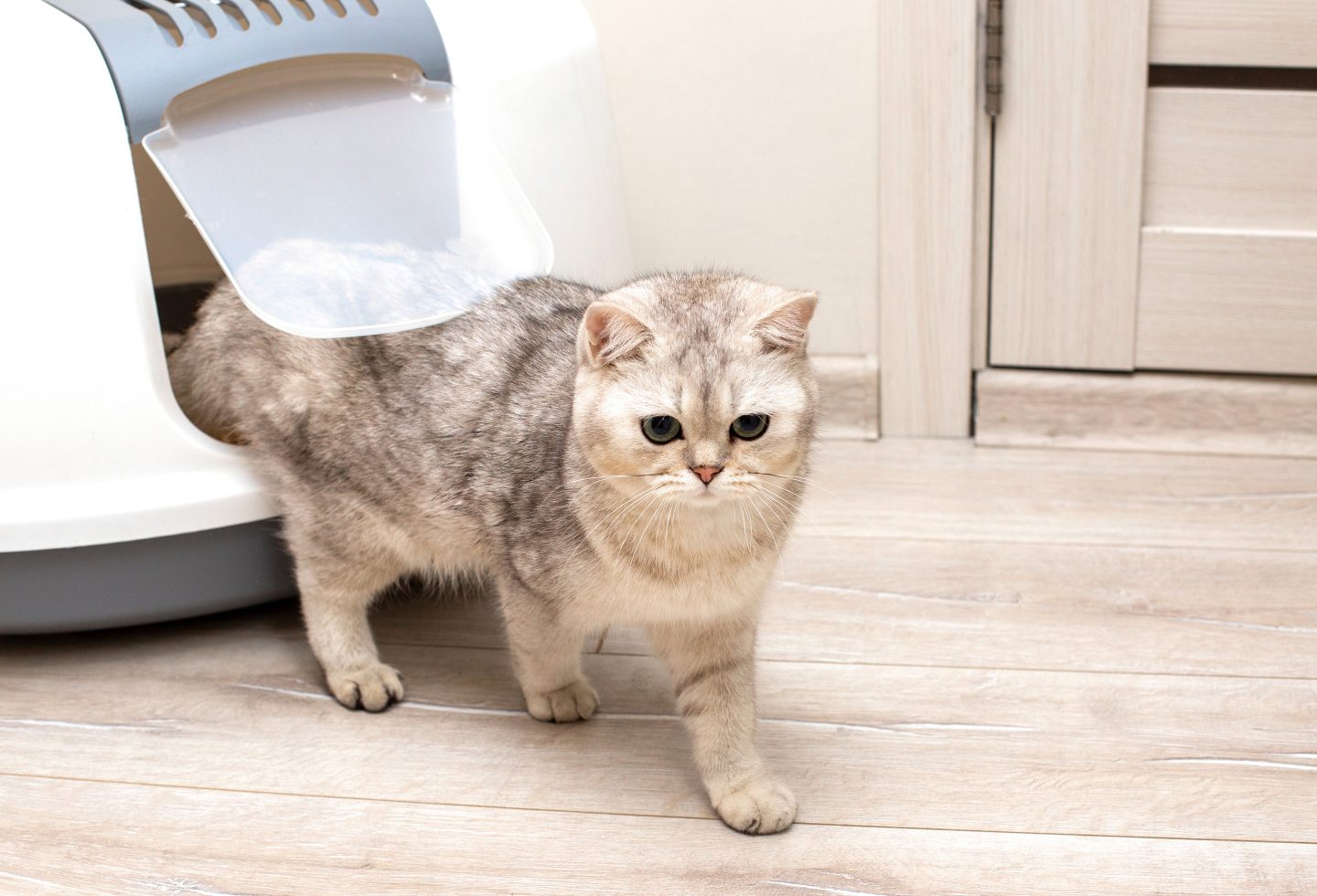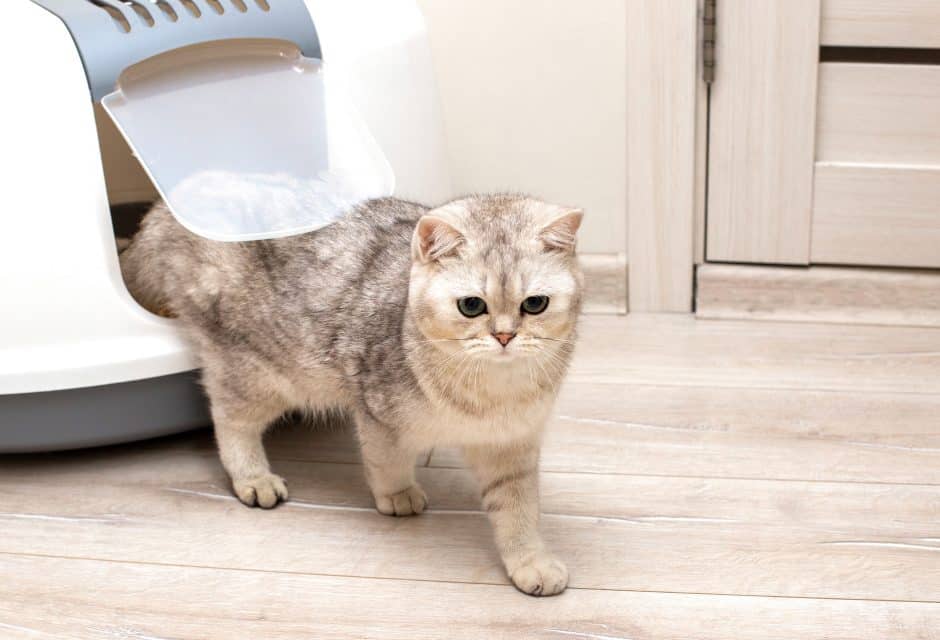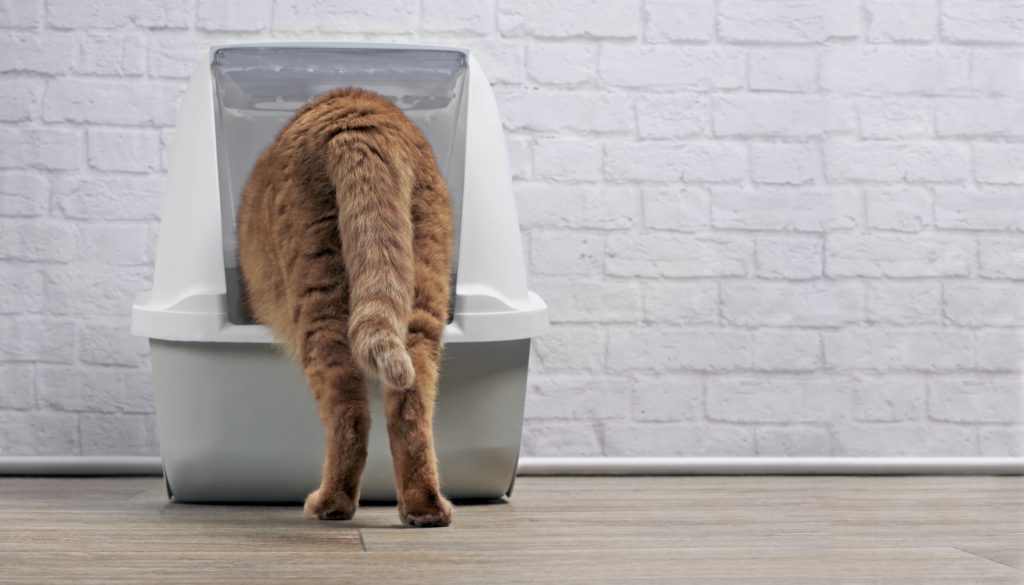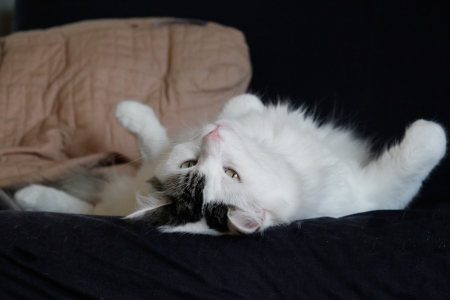

The Basement Litter Box Area and Other Human Mistakes
Expert tips on the best litter box placement and maintenance practices
By: Mieshelle Nagelschneider, Cat Behaviourist, host of the TV show My Cat From Hell, and author of the cat behaviour science book, The Cat Whisperer
Last Updated:
As a cat owner, you’ve probably heard by now that the correct number of litter boxes are important to help create and maintain good litter box habits in your cat household. For each cat there should be one litter box, plus one more. If you have 3 cats, you should have 4 boxes. Two cats? Three litter boxes. With every cat behavior consult I conduct, I explain the importance of litter box number, but also explain why multiple litter box locations are just as, if not more important than, number of litter boxes.
Cat owners consulting with me via Skype or Facetime video walk me down to their basements on their phones or laptops screens proudly showing me all 6 litter boxes. They are almost always neatly lined up in a row very similar to the collage of framed photos on one wall and the 8 tennis trophies lining a shelf in the bookcase.
The owner will usually say something like, “See? They have enough boxes! Why are they urinating all over the upstairs of the house!?”
One by one, I tell them. For the last 20 years of my cat behavior consulting professional existence, I explain to puzzled cat owners around the world (from Dubai to New Zealand), why it goes against their cat’s instincts to have all the litter boxes in just one area of the home. After all, would we want all the human toilets located in just one room of our house?
“If litter boxes are all lined up next to each other in one location, they appear to the cats as one box. Each cat then perceives the resources as being limited, and will feel more territorial”. Excerpt from, The Cat Whisperer book.
 Three Main Reasons Multiple Litter Box Locations are Important:
Three Main Reasons Multiple Litter Box Locations are Important:
Survival Instinct: Having multiple latrine sites spread out in a cat’s environment helps increase the difficulty of a predator locating them. You may not have any real predators in your home other than the two-year old human kind, or perhaps the black lab curled up on his dog bed, but this survival instinct is still very much a part of what makes up many of your cat’s behaviors – including litter box behavior.
Structuring the cat social hierarchy in a multi-cat household: Cats have a flexible social hierarchy, meaning they do not have a “top cat” or an “alpha cat” like dogs will have. A cat’s rank is tied to when they are using a resource location. For example, when a cat is using litter box number #3 in the guest bathroom at 5:00 p.m., they are high-ranking there at that particular moment in time. Another cat will come along and use this same litter box area at 9:00 p.m. and they become the high-ranking cat in that area at that time. This process is called time-sharing and explains why cat are so much more territorial than dogs.
Convenience: Easily accessible litter box areas can help a cat from choosing the Tibetan rug instead. I always say, think upstairs, downstairs, and North, East, South, West, when placing your litter boxes throughout your home. If you can’t move them out of the basement, at least spread them into different locations throughout the basement (again, North, East, South, West).
To schedule a cat behavior consult with Mieshelle Nagelschneider, please visit: www.thecatbehaviorclinic.com
Join the newsletter and never miss out on cat content again!
"*" indicates required fields
By clicking the arrow, you agree to our web Terms of Use and Privacy & Cookie Policy. Easy unsubscribe links are provided in every email.






 Three Main Reasons Multiple Litter Box Locations are Important:
Three Main Reasons Multiple Litter Box Locations are Important:





